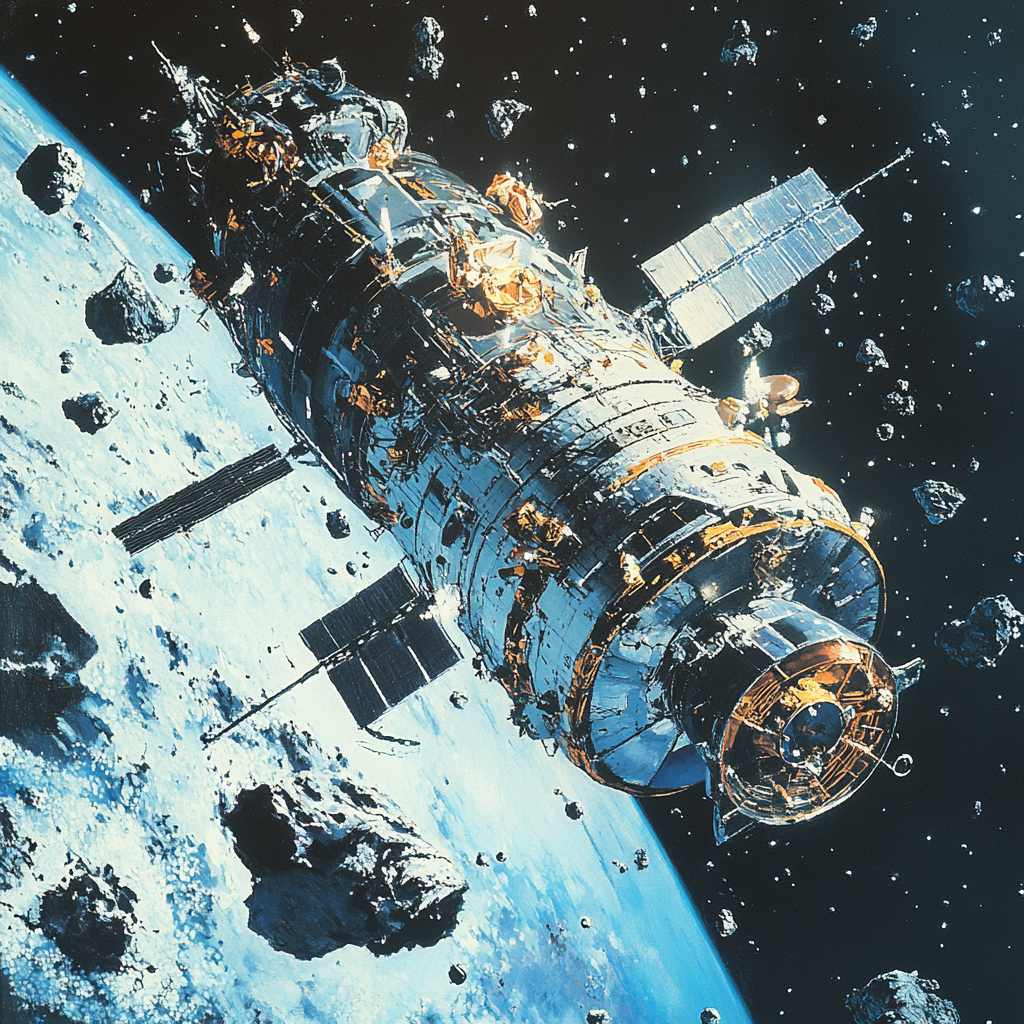
“Tianzhou 7 Concludes Mission with Atmospheric Reentry”
China's Tianzhou 7 Spacecraft: A Bold Leap into the Stars and Back
Ah, space! That vast expanse full of wonders, waiting to be explored. Just when you thought the heavens were just for sci-fi movies and whimsically ambitious dreams, China decided to kick things up a notch with its Tianzhou 7 spacecraft—an act that says, “Hey, look at us, we are serious players in the cosmic game!” So, grab your space helmets, folks, because we’re about to take a ride through this ambitious mission that not only grabbed headlines but also stirred the imagination.
On the fine day of January 17, 2024, at precisely 14:27 UTC, the Long March 7 rocket blasted off from the Wenchang Satellite Launch Center nestled nicely on Hainan Island. And just like that—whoosh—the seventh vessel in the Tianzhou series set off on its journey, destined for the ever-expanding Tiangong space station. Can we take a moment to appreciate that the number of resupply missions is hitting double digits? Yes, indeed! Now, if that’s not a sign of an evolving and functional space program, then I don’t know what is.
Now, without throwing too much technical jargon your way (we’re here to have a good time too), let’s break down the cool milestones that Tianzhou 7 hit during its celestial jaunt.
Launch and Docking
Within the span of just three hours, our brave little spacecraft docked with the Tiangong space station at 17:46 UTC. Ever tried to park in a busy lot? Multiply that by a zillion for the precision needed in space docking. Impressively, Tianzhou 7 went on to spend an astonishing 304 days, 22 hours, and 58 minutes floating among the stars. Out of that, it was cozily attached to Tiangong for 297 days, allowing astronauts to have a little bit more wiggle room when it came to their daily operations in orbit. Speaking of operations, the spacecraft packed a serious payload of 7,400 kg—yes, that’s a lot of supplies aimed at keeping our space-faring friends well-fed, well-equipped, and well-prepared for scientific discovery!
The Grand Finale: Departure and Decommissioning
Fast forward to November 10, 2024, when it was time for Tianzhou 7 to bid adieu to its orbital home. It undocked at 08:30 UTC, like a cosmic butterfly shedding its chrysalis, ready for a fiery exit. But hold on, it didn’t just vanish into thin air; terminology alert—this is called reentry, darling! By November 17, all systems were go for a planned descent. With engines firing to guide its exit from orbit, Tianzhou 7 hurtled back to Earth and disintegrated over the Pacific Ocean near Vanuatu at precisely 13:25 UTC, igniting a melodramatic display of heat and light. Imagine a cinematic explosion—only, you know, the kind we welcome when we’re talking about government-sponsored science!
Oh, and fun fact: The spot where this fiery spectacle occurred is lovingly dubbed “the spacecraft cemetery.” Not because it’s full of sad, rusting metal but because it’s remote enough to prevent any chance encounters with, let’s say, unsuspecting beachgoers. If only humans could take lessons from spacecraft; they know how to exit gracefully!
Beyond the Horizon
Yet, our tale doesn't end with just a successful mission. Oh, no! Just as Tianzhou 7 was calling it a wrap, China was already gearing up for its next act in space—Tianzhou 8. Launched just days later on November 15, 2024, this new cargo craft carried an array of supplies, including provisions for astronauts aboard the ongoing Shenzhou 19 mission and the upcoming Shenzhou 20. The cherry on top? Experiments featuring bricks made from lunar soil simulants were also included. Now, if that doesn't tickle your curiosity, I don’t know what will!
What’s Next for China’s Space Odyssey?
As we reflect on this spectacular odyssey, it becomes crystal clear that China’s ambitions in space are far from over. Not content with just reaching for the stars, the Chinese Manned Space Agency (CMSA) has plans that promise to shatter barriers and challenge earthbound expectations. Commercial contracts for low-cost cargo spacecraft are on the horizon—think of this as an interstellar IKEA! They aim to launch these new vehicles by the end of the decade, thus tossing their hats firmly into the burgeoning world of commercial space exploration.
But hold the phone! There’s more. We’re talking advanced research here, folks. Studies that probe the effects of microgravity on everything from fruit flies to fundamental principles of biology. This kind of research won’t just help us understand what it means to exist in space; it could lead to breakthroughs that utilize such knowledge for future human expeditions further into our solar system and maybe beyond!
Conclusion: A Call to Adventure
So, what have we learned from this captivating journey of the Tianzhou 7 spacecraft? Let’s sum it up: It represents not only a commitment to resupply missions that sustain human life in orbit but also catalyzes a series of advancements that hint at an illuminating future in space exploration.
With every launch, every experiment, and every mission, we draw one step closer to that twinkling expanse above us—adventuring further into the unknown. And with governments and agencies rallying their collective forces, there has never been a better time to keep our eyes focused on the stars.
Stay Informed
Want to stay up to date with the latest news on China's space program and other cosmic happenings? Subscribe to our Telegram channel: @channel_neirotoken. Don’t let the mysteries of the universe remain unexplored—together, let’s venture forth and discover what awaits us in the great beyond!

